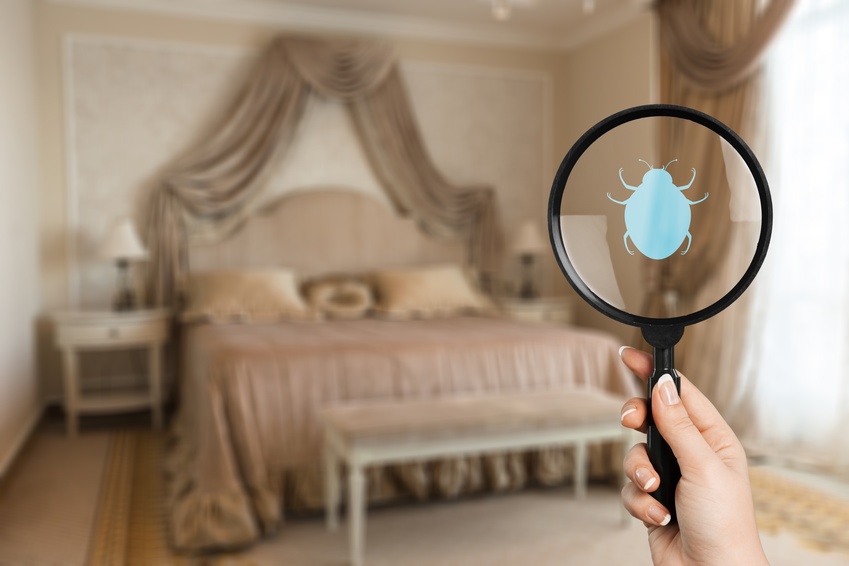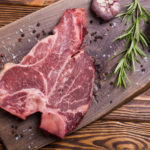
There may be a simple (but icky reason) for your uptick in symptoms while at home, especially while cleaning.
One in five Americans has experienced a bed bug infestation, or knows someone who has, and that’s bad news for people with histamine intolerance according to a recent study on the pests and their histamine triggering poop. The researchers also found that their presence in your home may determine how allergic you are to household dust, and could explain those watery eyes and itchy throat during household cleaning.
TOXIC INDOOR AIR
Did you know the air in your house or place of work is generally more toxic than outdoor air? A 2015 assessment of the Global Burden of Disease risk put indoor air pollution as the 9th largest risk for disease worldwide. Indoor air quality is affected not only by the products you decide to use, but volatile organic chemicals (VOCs) from furniture and paint, microbes of various sorts (bacteria, viruses, fungi), and “particulate matter” that is suspended in the air. This includes smoke and soot, pollen, moisture (water droplets), and dust — which is made up of all kinds of things, including excrements, fur/hair, and skin from insects and rodents.
A report published in the American Chemical Society’s (ACS) journal, Environmental Science & Technology, found that household dust is largely made up of our dead skin, fibers from carpets and upholstered furniture, dirt from shoes, and airborne particles. Over 60 percent of the dust originates outside. And sometimes living things that are supposed to stay outside invite themselves in. Ants, flies, mice, and bed bugs living in your home contribute to the household dust and your histamine load.
DON’T LET THE BED BUGS MOVE IN
In a 2018 study, histamine was found to be an unexpected contaminant in the home. The delivery method? Bed bug poop. Yup. Histamine is actually a large component of bed bug poop as a part of their aggregation pheromone, a chemical that helps bed bugs find each other. How cozy. The study was conducted to find out whether histamine accumulated in the dust of bedbug-infested homes, and whether eradication through heat would lower histamine over time. The researchers compared histamine levels of bed bug infested homes to homes not infested with bedbugs and found histamine levels were much higher in homes with bed bugs.
WHAT TO DO
First, if you have bed bugs, get rid of them, pronto. Admittedly, it’s not easy. Bed bugs are very resilient creatures and are very resistant to insecticides. Besides, that, if you have histamine issues, you’re not going to want to add more chemicals to your home –and particularly not near or in your bed. High temperatures in the form of “heat treatments” can be an effective, non-toxic way to eradicate bed bugs; however, it can be prohibitively expensive.
Since the resurgence of bed bug infestations since the early 2000s, a number of “green” alternatives to bed bug-eradicating pesticides have popped up. The active ingredients listed have mostly been essential oils; however, there have been no studies to back up their usage. And in practice, the natural remedies out there don’t seem to compare with the chemical insecticides as far as effectiveness. In a study of 18 essential oils, 3 silicone oils, and paraffin oil in their toxicity against bed bugs, there was one that was noteworthy: blood orange essential oil. Runners-up included Chinese Cedarwood, Virginian Cedarwood, and then Thyme and Oregano. All of the essential oils studied showed insecticidal activity; however, none of the essential oils were as effective as the silicone oils or the paraffin.
To keep dust at bay, clean regularly with non-toxic, fragrance-free cleaning products — or maybe thyme oil in water. If thyme deters bed bugs, it may be a good idea to include in your cleaning regimen. Thyme also has antihistamine properties, which could make it a very good addition to your cleaning even after bed bug eradication. The study of bed bugs and histamine found that heat-based eradication of bed bugs failed to lower histamine levels in the home –even after 3 months had passed. Thyme may be able to help with that.
Check out my post, Thyme: A Triple Wonder Herb to learn about its antihistamine properties and other benefits. If you can’t handle fragrance of any kind, just use a damp rag. Removing the dust regularly is key. Be sure to wash bedding and towels on a regular basis to avoid the build-up of dust. Get some fresh air in your home. Maybe get an air purifier.
 A CAVEAT
A CAVEAT
I drove myself and my partner completely insane boiling sheets, throwing out clothes and calling pest control for nearly six months till realising that we did not in fact have bedbugs. The culprit of my intense itching? I was on a diet that allowed for an after dinner fruit based frozen dessert. I was blending pineapple, kiwi, strawberries, all the wonderful high histamine fruits. Not only that, but the toxic toothpaste I was using was making my throat swell up and contributed to the itchiness. The confusing part was the itching wouldn’t happen right after exposure, but would take a few hours to build, usually when I was ready to go to bed.
—— REFERENCES ——
Air Pollution Particulate Matter. (2005, August 15). Retrieved from: https://www.greenfacts.org/en/particulate-matter-pm/index.htm
DeVries ZC, Santangelo RG, Barbarin AM, Schal C (2018) Histamine as an emergent indoor contaminant: Accumulation and persistence in bed bug infested homes. PLoS ONE 13(2): e0192462. https://doi.org/10.1371/journal.pone.0192462
Gries, R., Britton, R., Holmes, M., Zhai, H., Draper, J., & Gries, G. Bed bug aggregation pheromone finally identified. Angewandte Chemie (International Edition in English). 2015 Jan 19;54(4):1135-8. doi: 10.1002/anie.201409890. Retrieved from: https://www.ncbi.nlm.nih.gov/pubmed/25529634
Kumar P., Skouloudis, A. N., Bell, M., Viana, M., Carotta, M. C., Biskos, G., & Morawska, L. (2016). Real-time sensors for indoor air monitoring and challenges ahead in deploying them to urban buildings. The Science of the Total Environment, 560-561:150-9. Retrieved from:
Layton, D. W. & Beamer, P. I. (2009). Migration of Contaminated Soil and Airborne Particulates to Indoor Dust. Environmental Science & Technology, 43(21), 8199-8205. Retrieved from: https://www.ncbi.nlm.nih.gov/pubmed/19924944
Zha, C. Wang, G. & Li, A. (2018). Toxicities of Selected Essential Oils, Silicone Oils, and Paraffin Oil against the Common Bed Bug (Hemiptera: Cimicidae). Journal of Economic Entomology, 111(1), 170–177. https://doi.org/10.1093/jee/tox285













